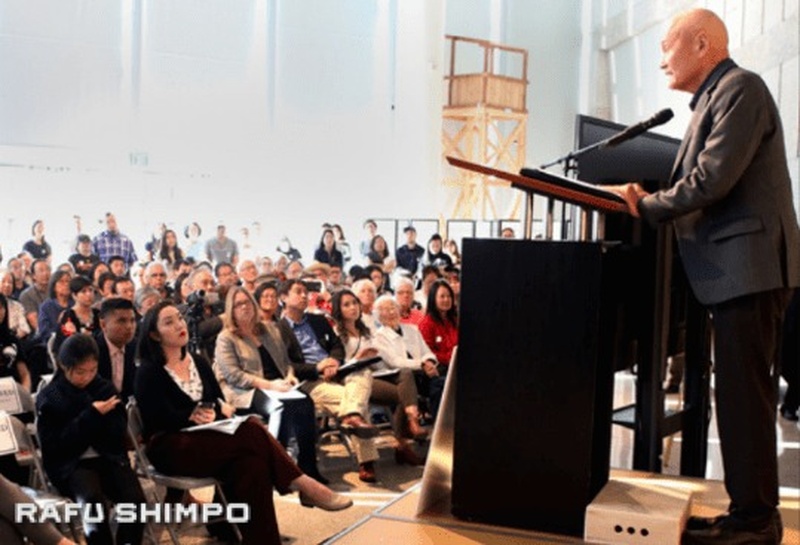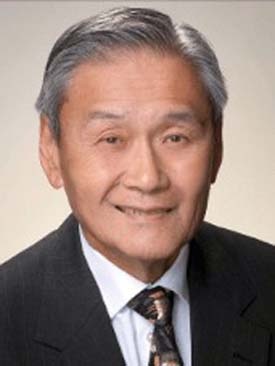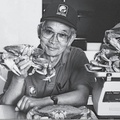Alan Takeshi Nishio passed away on Dec. 27 at his home in Gardena, surrounded by family, after battling cancer for more than 17 years. He was 78.
Born on Aug. 9, 1945 in the Manzanar concentration camp, Nishio grew up in the Venice-Mar Vista area of Los Angeles. He received his B.A. in political science from UC Berkeley in 1966 and his M.A. in public administration from the University of Southern California in 1968. He completed a certificate program in Asian studies at Sophia University in Tokyo in 1972, after a six-month course of study.
Thereafter he returned to the U.S. and became a prominent leader in the Japanese American community, dedicating his efforts to the community’s welfare and recognition in U.S. society.
Nishio played an instrumental role in the fight for Japanese Americans to attain redress and an apology from the government for their wartime incarceration as founder and co-chair of the National Coalition for Redress/Reparations (NCRR). His leadership from 1980-90 assisted in the enactment of the Civil Liberties Act of 1988 and greatly enhanced the public’s understanding of Japanese Americans and their unique history, challenges, and triumphs. He testified before the federal Commission on Wartime Relocation and Internment of Civilians in Los Angeles in 1981 and was a speaker at Day of Remembrance observances in both Southern and Northern California.
“Like most Japanese Americans, my family never spoke of the World War II incarceration out of a sense of shame that we had done something wrong,” Nishio recalled. “I felt it important to speak out so that our experiences from the camps would serve as a lesson for our nation about what can happen when groups can be profiled and scapegoated in the name of national security.”
Renamed Nikkei for Civil Rights and Redress, NCRR has continued its advocacy on behalf of Japanese Americans and other communities of color. Nishio helped celebrate the book launch for “NCRR: The Grassroots Struggle for Japanese American Redress and Reparations” in 2018.
“The main challenge is to understand the importance of this moment in history and how we need to fight for many of the rights that we take for granted,” Nishio once said. “We need to fight complacency and find ways in which we can be part of the solution.”
As a leader of the Little Tokyo People’s Rights Organization (LTPRO), Nishio assisted residents and small businesses that were displaced by redevelopment carried out by the city and large corporations in the 1970s and early 1980s. LTPRO and Japanese Community Progressive Alliance in San Francisco teamed up to produce a newspaper, the Nikkei Sentinel. Over the years, LTPRO gave rise to other advocacy groups, including NCRR, Asian Americans for Nuclear Disarmament, and Asian Americans for Jesse Jackson.
Nishio was involved with the Little Tokyo Service Center from its early years, serving as a board member from 1984, board president from 1994-1998 and 2003-2014, and later as chair of the Board of Governors. Under his leadership, LTSC developed extensive services for Japanese-language speakers, the only linguistically accessible services of their kind offered in the region.
He also propelled the realization of the Budokan project to bring a community sports center to Little Tokyo. Three decades in the making, Terasaki Budokan opened its doors in 2022 and will advance the preservation and promotion of Japanese American community traditions through sports for generations to come.
Nishio was involved in various efforts to promote deeper understanding of the Japanese immigrant experience in America. He was chair of the California Japanese American Community Leadership Council, which brought together activists from Southern and Northern California, from 2005 to 2015.
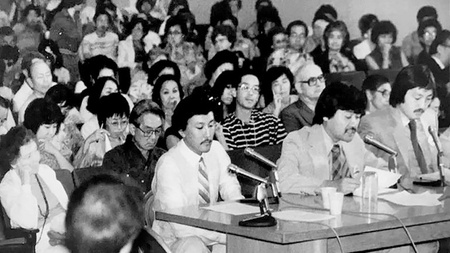
Nishio was a delegate of the inaugural class of the Japanese American Leadership Delegation Program in 2000, sponsored by the Ministry of Foreign Affairs of Japan. After the 2011 Great East Japan Earthquake, he traveled to Japan several times on U.S.-Japan Council delegations to assist non-profit/non-governmental organizations involved in the Tohoku region’s recovery. The Japanese government awarded him the Order of the Rising Sun, Gold Rays with Rosette, in 2016.
One of the founders and first staff members of the UCLA Asian American Studies Center and assistant director of the Center for Social Action at USC, Nishio was engaged for many years as a mentor to younger community leaders, teaching seminars in Asian American studies and advising the Asian American Student Association at CSU Long Beach, where he served as an administrator from 1972, retiring as associate vice president of student services in 2006.
Nishio was a charter member of the Japanese American National Museum, a board member of the Japanese American Cultural and Community Center, and an advisor to Kizuna, an organization striving to nurture the next generation of Japanese American leaders. He also worked with the Manzanar Committee, returning to his birthplace as a speaker during the annual Manzanar Pilgrimage and receiving the Sue Kunitomi Embrey Legacy Award in 2017.
During last year’s JACL National Convention, held in Little Tokyo, Nishio received the Lifetime Achievement Award, with JANM Senior Curator Karen Ishizuka accepting on his behalf. Nishio was unable to attend in person but watched the proceedings via livestream. The audience gave him a raised-fist salute in honor of his ’60s activism and Helen Ota, Keiko Kawashima and Haruye Ioka of Grateful Crane Ensemble sang his favorite song, John Lennon’s “Imagine.”
Nishio was a long-time cycling enthusiast, and about 100 of his friends held the inaugural “Cycle for Alan” event in his honor last April, going from Dockweiler Beach to Manhattan Beach. Nishio did not ride but was on hand to greet the participants. It is anticipated that the event will continue in his memory.
Both his colleagues and those he mentored are remembering Nishio not only for his leadership and dedication to community causes, but also for his warmth and sense of humor.
Naomi Ostwald Kawamura, director of Seattle-based Densho, noted, “Alan just emanated kindness and thoughtfulness.”
Densho Content Director Brian Niiya added, “Beyond the things on his resume, Alan was a trusted friend and mentor to many and also someone who modeled what balancing a mainstream career, activism, family — and in the last years of his life, illness and mortality — could look like. I will miss him greatly and continue to draw inspiration from all that he did and all that he was.”
“Alan had a very rare cancer which he fought with the same determination he approached so many of the issues facing our community,” said Chris Komai of the Little Tokyo Community Council and Little Tokyo Public Safety Association. “That he survived and remained productive for his final 17 years speaks to his character. A life well lived. RIP.”
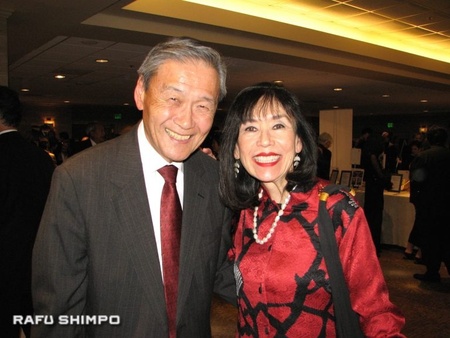
Nishio decided to stop the treatments he had been undergoing for his cancer, including radiation and chemotherapy, having found them to be more debilitating than helpful, and to use the time he had left to get his affairs in order.
According to Rafu columnist Sharon Yamato, he took his six grandchildren to see the movie Living, a remake by British novelist Kazuo Ishiguro of the 1952 Akira Kurosawa classic Ikiru, in which a civil servant learns that he has a terminal illness and decides to do something worthwhile before he dies — build a long-delayed playground for the local children. “When Alan saw this film in the ’60s, it profoundly affected him, and seeing it again with his grandchildren gave him the opportunity to express how it had inspired his life and work,” Yamato said.
Nishio also took his family to the Ireichō at JANM, which contains the names of over 125,000 Japanese Americans who were incarcerated. People are invited to place hanko stamps beside their own names as well as names of deceased loved ones — in Nishio’s case, his grandparents, Genroku George and Kinu; his parents, Kay Kiyoshi and Mitsue; and his sister, Jane Michiko. Nishio was accompanied on this visit by his wife, their two daughters, and their six grandchildren.
“As the grandchildren stamped each name, Alan used the opportunity to share noteworthy family history that could easily have been lost or forgotten with his passing,” Yamato wrote. “He began with the story of his grandfather, who immigrated from Hiroshima to earn tax repayment money for the family farm and spent his first months doing arduous labor as a railroad worker. He then moved on to his grandmother, who was only allowed in the U.S. as one of thousands of picture brides who came to marry men they had never met.
“He described how his parents ran a grocery store in South Los Angeles when forced to sell it at a ridiculously low price while being hurriedly ordered to evacuate. Leaving their stored possessions behind in a warehouse, they returned after the war to find it ransacked, thus having to start over with virtually nothing.
“Perhaps worse than losing their material possessions, however, was losing what Alan called their ‘hopes and dreams.’ He surmised that his father most likely turned to alcohol partly to avoid facing postwar life in work he hated as a gardener. As a child required to garden by his father’s side while never speaking to his non-communicative parent, Alan now spoke openly about his father’s alcohol addiction so as not to pass this legacy of silence on to his grandchildren.”
He also talked about his sister, who developed a long-term dependency on tranquilizers prescribed by her therapist and did not see her family during her final years.
Kay Ochi, Kathy Masaoka, Suzy Katsuda, Richard Katsuda and Janice Yen of NCRR made the following announcement on Dec. 28: “It’s with great sadness that we share the passing of Alan Nishio on Wednesday, Dec. 27, after a 17+-year fight against cancer. Alan went into hospice care in February of this year; his doctors thought that he might have 2-3 months. While the going was tough, he had the best care possible by his wife Yvonne, their daughters and families, and the support of a large community of friends.
“Yvonne shared that Alan had become bedridden about 1½ weeks ago, but on Christmas Eve he gathered his grandkids around him for a special talk … about life and what is important in life …
“Alan’s lifelong efforts on behalf of students, redress/reparations, the Little Tokyo community have benefited us and so, so many … May he rest in peace.”
Nishio is survived by his wife of 55 years, Yvonne Wong Nishio; daughters, Angela Nishio and Mia Lockwood; son-in-law, Gregory Lockwood; and grandchildren, Evan, Alex, Sara, Ty, Kira and Emi, ages 14 to 19.
* * * * *
A Celebration of Life will be held on Saturday, Feb. 10, at 2 p.m. at Terasaki Budokan, 249 S. Los Angeles St. (between Second and Third streets) in Little Tokyo. In lieu of flowers or koden, a donation to LTSC is requested.
To RSVP, visit Give.LTSC.org/AlanNishio. For more information, contact Chris Aihara at aihara.chris@gmail.com.
*This article was originally published in The Rafu Shimpo on January 6, 2024.
© 2024 The Rafu Shimpo


